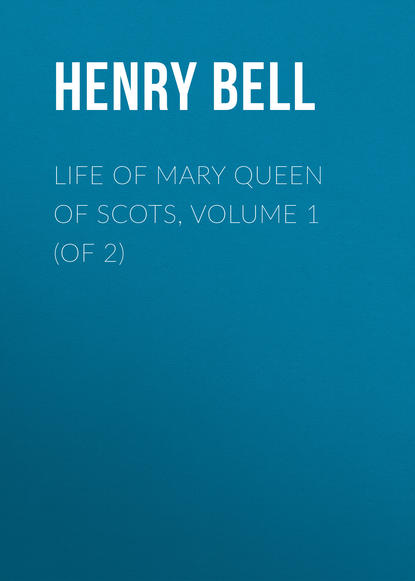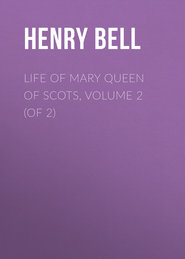По всем вопросам обращайтесь на: info@litportal.ru
(©) 2003-2024.
✖
Life of Mary Queen of Scots, Volume 1 (of 2)
Настройки чтения
Размер шрифта
Высота строк
Поля
124
Miss Benger, oddly enough, says, it was on Saturday the 5th of April; a mistake into which no other historian with whom we are acquainted has fallen. – Miss Benger’s Memoirs, vol. ii. p. 233.
125
The Parliament had met upon the 7th, and Mary had opened it in person, unattended by Darnley, who refused to give it his countenance; but no business of importance had as yet been transacted.
126
This disease was “an inflammation of the liver, and a consumption of the kidneys.” —Keith, Appendix, p. 119.
127
Blackwood in Jebb, vol. ii. p. 204. – Goodall, vol. i. p. 252.
128
Stranguage, p. 33. – Crawford’s Memoirs, p. 9.
129
Keith, Appendix, p. 122.
130
Conæus in Jebb. Vol. ii. p. 25.
131
Robertson’s Appendix to vol. i. No. xv.
132
Keith, p. 330. – Appendix, p. 119. – Melville’s Memoirs, p. 148. – Buchanan’s History of Scotland, Book xvii. – Martyre de Marie in Jebb, vol. ii. p. 204. – Knox, p. 392. – Holinshed’s Chronicles, p. 382. – Robertson, Appendix to Vol. i. No. xv. – Some historians have maintained, that Rizzio was actually despatched in Mary’s presence. But this is not the fact, for Mary remained ignorant of his fate till next day. In a letter which the Earl of Bedford and Randolph wrote to the Privy Council of England, giving an account of this murder, and which has been published in the first series of “Ellis’s Original Letters, illustrative of English History,” (vol. ii. p. 207), we find these words: – “He was not slain in the Queen’s presence, as was said.” Holinshed and others are equally explicit. It has been likewise said, that it was not intended to have killed him that evening; but to have tried him next day, and then to have hanged or beheaded him publicly. That there is no foundation for this assertion, is proved by the authorities quoted above; and to these may be added the letter from Morton and Ruthven to Throckmorton, and “the bond of assurance for the murder to be committed,” granted by Darnley to the conspirators, on the 1st of March, both preserved by Goodall, vol. i. p. 264 and 266. That the conspirators meant, as others have insisted, to take advantage of the situation in which Mary then was, and terrify her into a miscarriage, which might have ended in her death, is unsupported by any evidence; nor can we see what purposes such a design would have answered.
133
Vide M’Crie’s Life of Knox, vol. i. p. 47.
134
Knox, p. 339. – Buchanan, Book XVII.
135
Keith, p. 332 – and Appendix, 126.
136
That something of the kind was actually contemplated, we learn from Mary herself. “In their council,” she says in the letter already quoted, “they thought it most expedient we should be warded in our castle of Stirling, there to remain till we had approved in Parliament all their wicked enterprises, established their religion, and given to the King the crown-matrimonial, and the whole government of our realm; or else, by all appearance, firmly purposed to have put us to death, or detained us in perpetual captivity.” – Keith, Appendix, p. 132.
137
Ruthven’s “Discourse” concerning the murder of Rizzio, in Keith, Appendix, p. 128.
138
Keith, p. 334. – Stuart’s History of Scotland, p. 138, et seq.
139
Melville’s Memoirs, p. 154 – Goodall, vol. i. p. 286. – Chalmers, vol. ii. p. 164.
140
Melville’s Memoirs, p. 156. – Keith, p. 337.
141
Melville’s Memoirs, p. 158.
142
Keith, p. 345, and Chalmers, vol. i. p. 180.
143
Buchanan’s History, Book XVIII. – His “Detection,” in Anderson’s Collections, vol. ii. p. 6.; and his “Oration,” p. 44.
144
Chalmers, vol. i. p. 181, et seq. Goodall, vol. i. p. 292, et seq.
145
Keith, p. 345.
146
Knox, p. 386 – Anderson, vol. i. p. 90 – Tytler, vol. ii. p. 39 – Chalmers, vol. ii. p. 206-207.
147
Knox, p. 396, and Chalmers, p. 219.
148
Knox, p. 392. Chalmers, vol. ii. p. 206 and 218. Laing, vol. i. p. 359. In the first edition of Tytler’s “Vindication,” Bothwell, being confounded with the former Earl, his father, was said to be about fifty-nine at this period. In the second edition, Tytler partly corrected his error, but not entirely; for he stated Bothwell’s age to be forty-three when he married. Chalmers, who is seldom wrong in the matter of dates, has settled the question.






